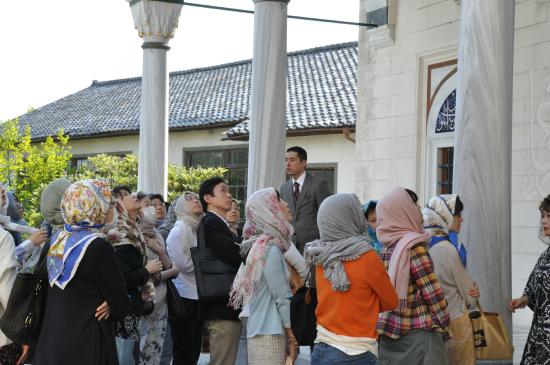One of the oldest and largest mosques in Japan has been holding free tours into the facility over the past year, offering interested visitors information about Islam and its teachings, media sources reported.
Tokyo Camii mosque is the largest mosque in Japan, which was originally built along with an adjoining school on May 12, 1938 by Tatar immigrants from Russia who had come to Japan after the October Revolution
Currently, the mosque receives nearly 100 visitors during weekend, compared to only 20 before the hostage problem.
Visitors to the mosque have been offered free tours since the new program was launched last April.
During the tour, participants receive explanations about Islamic teachings and the religious functions of mosques from Shimoyama, a Muslim. They are also permitted to observe prayers.
The number of people asking for a tour into the mosque has increased noticeably after ISIS group held two Japanese hostage in Syria.
"I realized for the first time that I had no knowledge about the Islamic religion when the hostage situation occurred," said Yuki Obayashi, 22, a senior at a university in Tokyo, participated in a tour held last month.
Shimoyama feels that more and more people are trying to understand Islam since the hostage crisis.
It was made under the direction of Abdürreşid İbrahim, the first Imam of the mosque, and Abdülhay Kurban Ali.
According to the Tokyo-based Japan Muslim Association, there are between 70 and 80 mosques in Japan.
Islam began in Japan in the 1920s through the immigration of a few hundreds of Turkish Muslims from Russia following the Russian revolution, and in 1930, the number of Muslims in the country reached about 1000 of different origins.
Another wave of migrants who boosted the Muslim population reached its peak in the 1980s, along with migrant workers from Iran, Pakistan and Bangladesh.
It is noteworthy that Japan today considered home to a thriving Muslim community of about 120,000, among nearly 127 million in the world's tenth most populated country.
/257

